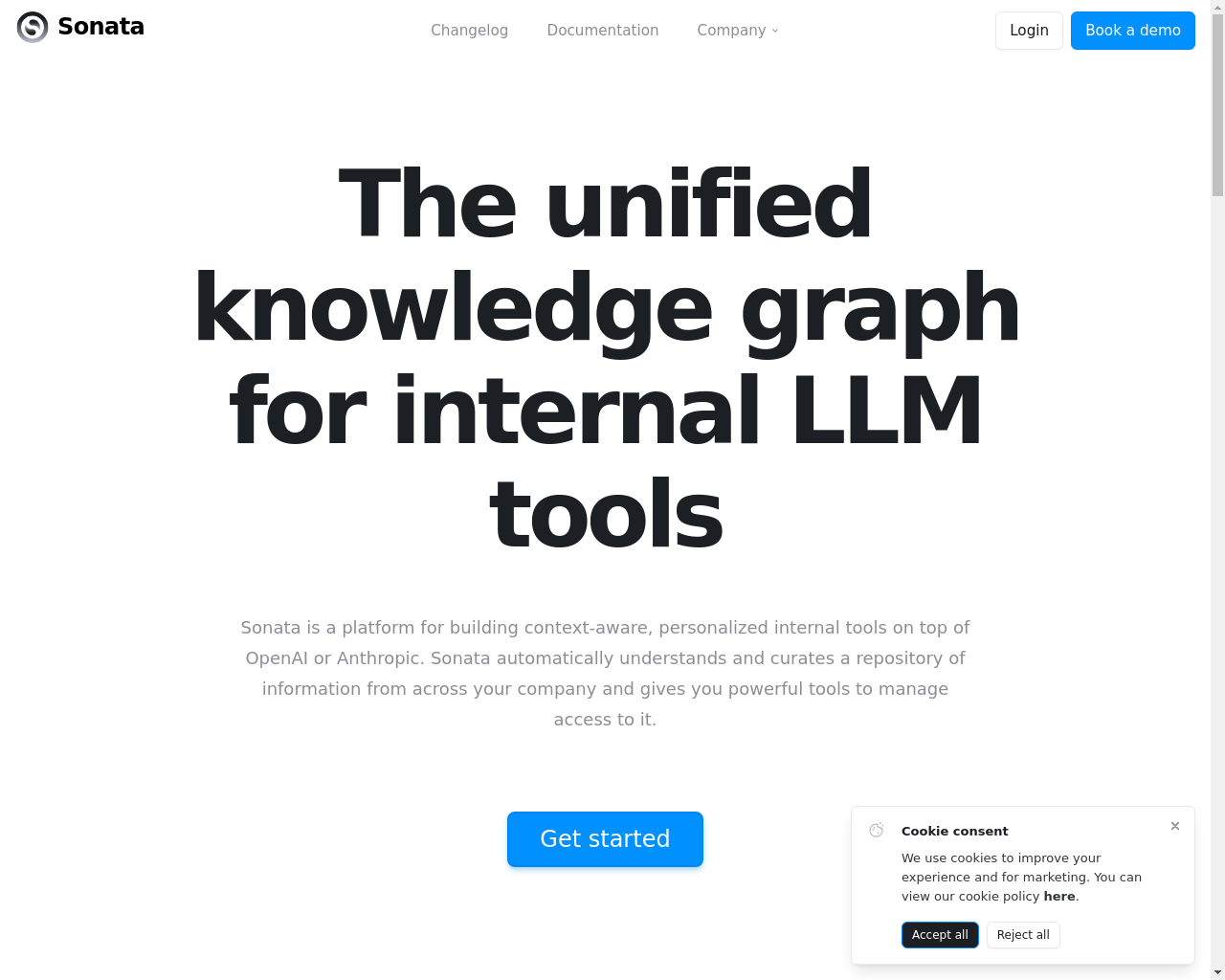

Highlight 1
Sonata provides a structured approach to manage internal information, significantly improving the onboarding experience for AI systems.
Highlight 2
The platform’s capability to integrate with various internal tools creates seamless workflows for users.
Highlight 3
The emphasis on a knowledge graph allows for extensive customization, enabling organizations to adapt the tool to their specific needs.

Improvement 1
The user interface could benefit from a more modern and intuitive design to enhance user engagement and ease of navigation.
Improvement 2
There should be more onboarding resources or tutorials to help new users fully understand and utilize Sonata's capabilities.
Improvement 3
Expanding multi-language support could attract a broader user base and cater to diverse organizations.
Product Functionality
Consider adding customizable dashboards or reporting features that allow users to visualize their data effectively.
UI & UX
Revamp the interface with modern design principles, improving navigation and user engagement through interactive elements.
SEO or Marketing
Implement a content marketing strategy that includes blogs, case studies, and user testimonials to enhance search engine visibility and educate potential users.
MultiLanguage Support
Evaluate user demand for additional languages and gradually implement translations, focusing on commonly spoken business languages to cater to global users.
- 1
What is Sonata used for?
Sonata is used to create a comprehensive knowledge graph for internal tools, helping organizations manage their information and improve the onboarding process for AI systems.
- 2
How does Sonata integrate with internal tools?
Sonata integrates with various internal tools to streamline workflows and provide a centralized place for information access.
- 3
Can Sonata support multiple languages?
Currently, Sonata's multi-language support is limited; however, expanding this feature is an area for potential improvement.
